36983-36-5
| Name | ethyl 2,4-dioxo-4-thiophen-2-ylbutanoate |
|---|---|
| Synonyms |
2,4-Dioxo-4-thiophen-2-yl-butyric acid ethyl ester
2,4-dioxo-4-[2]thienyl-butyric acid ethyl ester ethyl 2,4-dioxo-4-(2-thienyl)butyrate ethyl 2-thenoylpyruvate ethyl 2,4-dioxo-4-(2-thienyl)butanoate ethyl 2,4-dioxo-4-(thiophen-2-yl)butanoate ethyl 2-thionylpyruvate Ethyla,g-dioxo-2-thiophenebutanoate |
| Density | 1.277g/cm3 |
|---|---|
| Boiling Point | 375.9ºC at 760mmHg |
| Melting Point | 34ºC |
| Molecular Formula | C10H10O4S |
| Molecular Weight | 226.24900 |
| Flash Point | 181.1ºC |
| Exact Mass | 226.03000 |
| PSA | 88.68000 |
| LogP | 1.45310 |
| Index of Refraction | 1.533 |
Synonym:Ethyl 2-thenoylpyruvat Section 2 - COMPOSITION, INFORMATION ON INGREDIENTS
Risk Phrases: None Listed. Section 3 - HAZARDS IDENTIFICATION EMERGENCY OVERVIEW
Moisture sensitive. Potential Health Effects Eye: May cause eye irritation. Skin: May cause skin irritation. May be harmful if absorbed through the skin. Ingestion: May cause irritation of the digestive tract. May be harmful if swallowed. Inhalation: May cause respiratory tract irritation. May be harmful if inhaled. Chronic: Not available. Section 4 - FIRST AID MEASURES Eyes: Flush eyes with plenty of water for at least 15 minutes, occasionally lifting the upper and lower eyelids. Get medical aid. Skin: Get medical aid. Flush skin with plenty of water for at least 15 minutes while removing contaminated clothing and shoes. Ingestion: Get medical aid. Wash mouth out with water. Inhalation: Remove from exposure and move to fresh air immediately. Notes to Physician: Treat symptomatically and supportively. Section 5 - FIRE FIGHTING MEASURES General Information: As in any fire, wear a self-contained breathing apparatus in pressure-demand, MSHA/NIOSH (approved or equivalent), and full protective gear. Extinguishing Media: Use foam, dry chemical, or carbon dioxide. Section 6 - ACCIDENTAL RELEASE MEASURES General Information: Use proper personal protective equipment as indicated in Section 8. Spills/Leaks: Vacuum or sweep up material and place into a suitable disposal container. Section 7 - HANDLING and STORAGE Handling: Avoid breathing dust, vapor, mist, or gas. Avoid contact with skin and eyes. Storage: Store in a cool, dry place. Store in a tightly closed container. Store under an inert atmosphere. Section 8 - EXPOSURE CONTROLS, PERSONAL PROTECTION Engineering Controls: Use adequate ventilation to keep airborne concentrations low. Exposure Limits CAS# 36983-36-5: Personal Protective Equipment Eyes: Not available. Skin: Wear appropriate protective gloves to prevent skin exposure. Clothing: Wear appropriate protective clothing to prevent skin exposure. Respirators: Follow the OSHA respirator regulations found in 29 CFR 1910.134 or European Standard EN 149. Use a NIOSH/MSHA or European Standard EN 149 approved respirator if exposure limits are exceeded or if irritation or other symptoms are experienced. Section 9 - PHYSICAL AND CHEMICAL PROPERTIES Physical State: Solid Color: yellow Odor: Not available. pH: Not available. Vapor Pressure: Not available. Viscosity: Not available. Boiling Point: Not available. Freezing/Melting Point: 34 deg C Autoignition Temperature: Not available. Flash Point: Not available. Explosion Limits, lower: Not available. Explosion Limits, upper: Not available. Decomposition Temperature: Solubility in water: Specific Gravity/Density: Molecular Formula: C10H10O4S Molecular Weight: 226 Section 10 - STABILITY AND REACTIVITY Chemical Stability: Not available. Conditions to Avoid: Incompatible materials, exposure to moist air or water. Incompatibilities with Other Materials: Oxidizing agents, bases, amines. Hazardous Decomposition Products: Carbon monoxide, oxides of sulfur, carbon dioxide. Hazardous Polymerization: Has not been reported Section 11 - TOXICOLOGICAL INFORMATION RTECS#: CAS# 36983-36-5 unlisted. LD50/LC50: Not available. Carcinogenicity: Ethyl 2,4-dioxo-4-(2-thienyl)butanoate - Not listed by ACGIH, IARC, or NTP. Section 12 - ECOLOGICAL INFORMATION Section 13 - DISPOSAL CONSIDERATIONS Dispose of in a manner consistent with federal, state, and local regulations. Section 14 - TRANSPORT INFORMATION IATA No information available. IMO No information available. RID/ADR No information available. Section 15 - REGULATORY INFORMATION European/International Regulations European Labeling in Accordance with EC Directives Hazard Symbols: Not available. Risk Phrases: Safety Phrases: S 24/25 Avoid contact with skin and eyes. WGK (Water Danger/Protection) CAS# 36983-36-5: No information available. Canada None of the chemicals in this product are listed on the DSL/NDSL list. CAS# 36983-36-5 is not listed on Canada's Ingredient Disclosure List. US FEDERAL TSCA CAS# 36983-36-5 is not listed on the TSCA inventory. It is for research and development use only. SECTION 16 - ADDITIONAL INFORMATION N/A |
| Hazard Codes | Xi: Irritant; |
|---|---|
| HS Code | 2934999090 |
| Precursor 3 | |
|---|---|
| DownStream 5 | |
| HS Code | 2934999090 |
|---|---|
| Summary | 2934999090. other heterocyclic compounds. VAT:17.0%. Tax rebate rate:13.0%. . MFN tariff:6.5%. General tariff:20.0% |
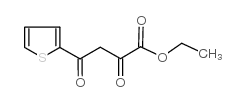
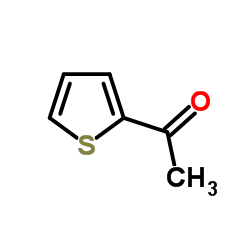

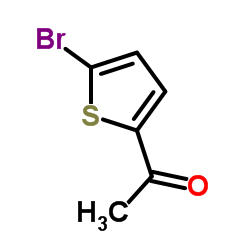

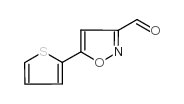
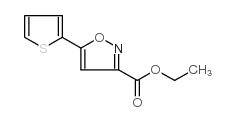
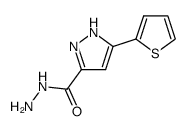
![[5-(2-THIENYL)-3-ISOXAZOLYL]METHANOL structure](https://image.chemsrc.com/caspic/234/194491-44-6.png)